How to Define Your Audience When You’re Just Starting Out
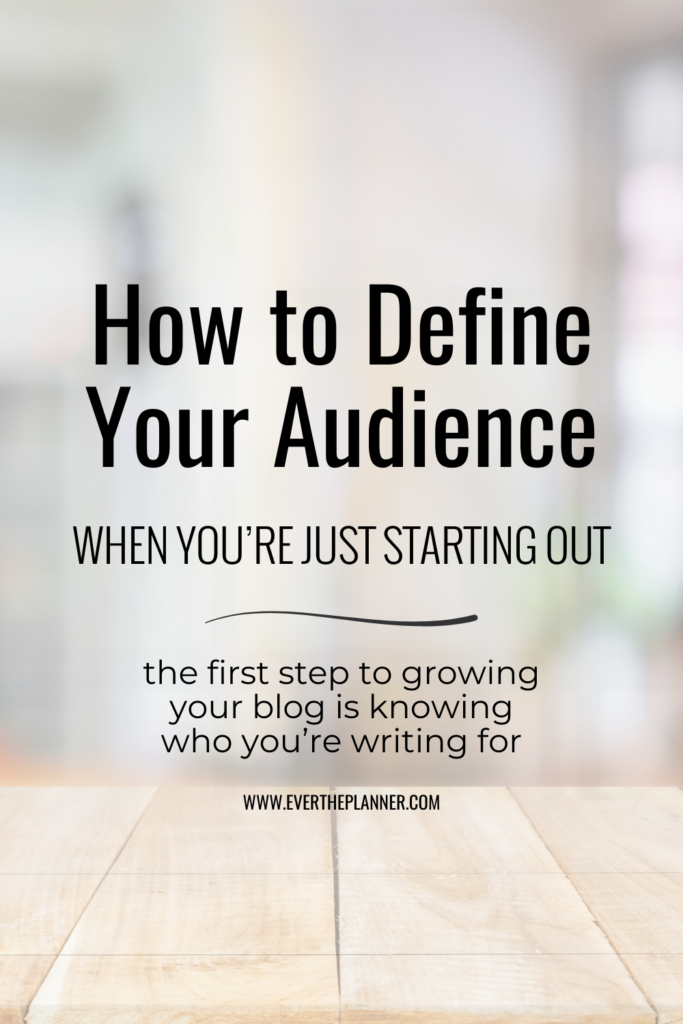
If you’ve ever stalled out on publishing because you weren’t sure who you were writing for—you’re not alone. Learning how to define your audience when you’re just starting out can feel overwhelming, especially when you haven’t built up traffic or feedback to guide you.
But here’s the truth: you don’t need a perfect, detailed audience profile to move forward—you just need a clear, simple starting point.
When you’re new to blogging or online business, it’s easy to overthink every detail. You might wonder:
- “What if I pick the wrong audience?”
- “What if I change my mind later?”
- “Do I need to create a whole avatar worksheet before I publish anything?”
Let’s take the pressure off.
In this post, you’ll learn how to define a beginner-friendly version of your target audience, even if you’re still finding your voice, building your blog, and figuring things out as you go.
This isn’t about locking yourself into a niche forever—it’s about creating enough clarity to confidently start showing up and creating content that connects.
TL;DR:
If you’re brand new and unsure who your blog is for, don’t overthink it. This guide will walk you through simple steps and journaling prompts to help you define your audience, even without traffic, feedback, or years of experience.
Why You Need to Define Your Blog Audience Early On
When you’re just getting started, it might feel like you’re supposed to “just write” and figure out your audience later. But the truth is—taking a few minutes now to define your blog audience can make everything easier.
Here’s what happens when you have even a simple audience in mind:
You plan blog content faster
You stop spinning your wheels wondering what to write. When you know who you’re talking to and what they’re struggling with, blog post ideas come more naturally.
Your content feels more personal
Instead of writing generic how-to advice, your posts sound like they’re coming from you—because you’re speaking directly to someone. That’s what creates connection and trust.
You stay more consistent
When you know the role your blog plays in someone else’s journey, it’s easier to keep showing up. You’re not just writing “about blogging”—you’re writing for your reader who needs guidance, reassurance, or next steps.
You build momentum instead of overthinking
Blogging becomes less about performing and more about helping. And the more helpful you are, the more your ideal readers will start to find you.
It can be super intimidating when you’re trying to figure out who your audience might be, but I’ve got you covered—this post will give you the tools you need to get your first imaginary “reader” ready so that you can start building cohesive content for them and start attracting real readers.
Start with What You Know: Audience Discovery Exercise
One of the easiest ways to begin defining your audience is to stop looking outward and start looking inward.
When you’re not sure who your blog is for, begin by asking:
What do I already know, love, or have experience with that could help someone else?
You don’t need to be an expert with a degree or a client roster. If you’ve solved a problem, worked through a challenge, or gotten results in a certain area—someone out there is one or two steps behind you and could benefit from what you know.
This is a great place to begin.
Try These Questions:
- What topics do I find myself thinking or talking about often?
- What’s something I’ve learned that made my life easier, faster, or better?
- What have I struggled with in the past that I now understand more clearly?
- What do friends, coworkers, or peers naturally ask me for help with?
Your answers don’t have to be profound—they just have to be real. This is about finding alignment between what you enjoy sharing and what others might need.
Personally, I come back to online business again and again. I truly believe that it’s possible for regular people like us to build something valuable online— something that grows into a sustainable, profitable, and genuinely helpful business. That’s why I started Ever the Planner: to help you get your own online business off the ground and making money as quickly as possible.
How to Figure Out Who Your Blog Is For (Even if You’re New)
Once you’ve thought about your own skills, experiences, and interests, the next step is asking:
Who would benefit most from what I’m sharing?
This is where a lot of beginners get stuck, thinking they need to “niche down” perfectly from the start. But you don’t need to define a narrow industry or demographic right away.
You just need to connect what you know with the kind of person who needs it.
Start by Finishing These Sentences:
- “Someone who is struggling with ___ could use what I know.”
- “Someone who wants to ___ would really benefit from my posts.”
Here are a few examples:
- If you blog about content planning, your audience might be beginner bloggers who feel overwhelmed and need structure.
- If you share proofreading tips, your audience could be content creators or small business owners who want their work to sound polished and professional.
- If you talk about affiliate marketing, you might be speaking to solopreneurs who want to start monetizing without creating a full product yet.
Ever the Planner started as a simple webpage for my proofreading services, but I quickly realized I could help so many more people. I began writing content to support new bloggers—helping them launch with a plan, stay consistent, and polish their writing along the way.
Looking for a way to dive deeper into who you’re writing for? Check out Jeniffer Thompson’s post: Define Your Ideal Reader with This 4-Step Process.
Once you start defining your audience, planning your content gets so much easier. Grab my free Content Clarity Workbook—it’ll help you map out what to post and how to serve your audience more intentionally

How to Define Your Audience Without Traffic or Feedback
This is one of the biggest mindset blocks for new bloggers:
“How can I define my audience if no one’s reading my blog yet?”
Here’s the truth: most successful creators started with no traffic and no feedback.
They chose a direction based on what they cared about, what they knew, and who they wanted to help—and then they refined it as they grew.
So if your site is new and you haven’t gotten comments, DMs, or search traffic yet… that’s totally normal. And it doesn’t mean you have to wait for those to start rolling in before you can define who you’re writing for.
Here’s What to Do Instead:
- Trust your instincts. Who do you want to help? You get to choose.
- Speak to the version of you from a few steps ago. Often, the best audience to start with is someone who’s facing a challenge you’ve already overcome.
- Let clarity grow with consistency. The more you write, the more patterns you’ll start to see.
You don’t need permission from pageviews or followers to start helping someone.
You just need to start showing up for the person you believe is out there—and trust they’ll find you faster if you’re speaking directly to them.
Once you’ve defined your audience, the next step is building a content plan that serves them well. Here’s how to get started.
Journaling Prompts to Help Define Your Target Audience
If you’re still not sure who your audience is, that’s okay.
A few thoughtful questions can bring surprising clarity.
Set a timer for 10–15 minutes, open a notebook or doc, and reflect on a few of these prompts. Let it be messy—this isn’t a quiz, it’s a discovery tool.
Try These Prompts:
- What’s something I’ve learned the hard way that I could help someone else avoid?
- What kind of questions do friends or peers naturally come to me with?
- What topics could I talk about all day without getting bored?
- If I could sit down with one person and help them over coffee, who would that be—and what would they need help with?
- What kind of transformation or progress would make me feel proud to support someone through?
- (Bonus) If someone messaged me and said, “Thank you for your blog—it helped me so much,” what would I want them to say next?
You don’t need perfect answers. What matters is that you start noticing themes—topics you care about, people you feel pulled to help, and challenges you’ve personally worked through.
These are all clues pointing to your audience.
Write Your “Starter Audience Snapshot”
Now that you’ve explored what you know, who you want to help, and what your audience might be struggling with—it’s time to put it all together.
This is your starter audience snapshot: a short, focused paragraph that describes the kind of person you’re writing for. It doesn’t need to be perfect or final. The goal is clarity, not rigidity.
Having this snapshot makes blogging easier. You can come back to it every time you sit down to write a post, plan content, or choose which tips to share.
Try This Fill-in-the-Blank Prompt:
I’m writing for [type of person] who is struggling with [problem]. They want [desired outcome], but they feel [emotion or obstacle]. I want to help them [your solution or value].
Example Audience Snapshot:
I’m writing for beginner bloggers who feel overwhelmed by all the conflicting advice online. They want a simple plan to start showing up, publishing consistently, and making money—but they’re not sure where to begin. I help them launch faster with clear strategies, helpful tools, and a little encouragement along the way.
This snapshot becomes your anchor. When you’re planning posts, writing emails, or sharing tips online, you can come back to this one person in your mind—the person your content is meant to help.
If you’d like a fast way to turn your audience insights into actionable content ideas, my 15-Minute Content Reset is a great next step. It’ll help you move from clarity to content with ease.
Common Mistakes Beginners Make When Defining Their Blog Audience
When you’re just starting out, it’s easy to overthink your audience—or avoid the whole process because it feels overwhelming. But getting stuck in one of these traps can keep you from building momentum.
Let’s walk through a few common mistakes so you can skip them and move forward with clarity.
🚫 Mistake #1: Trying to speak to everyone
When you try to reach everyone, your message becomes watered down. Instead, focus on speaking to one type of person with a specific need—that’s how you create connection.
🚫 Mistake #2: Overcomplicating your audience profile
You don’t need to list out their favorite coffee drink, where they shop, or what car they drive. Focus on what they’re struggling with and what they want. That’s what matters when you’re creating content that helps.
🚫 Mistake #3: Changing your direction too often
It’s okay to shift and refine your audience over time—but give your current focus a chance to grow roots. Consistency builds clarity (and credibility).
🚫 Mistake #4: Waiting until it’s perfect
You might feel like you need to figure out your niche, branding, and messaging before you publish anything. But the real clarity comes through action. Don’t wait—start small and adjust as you go.
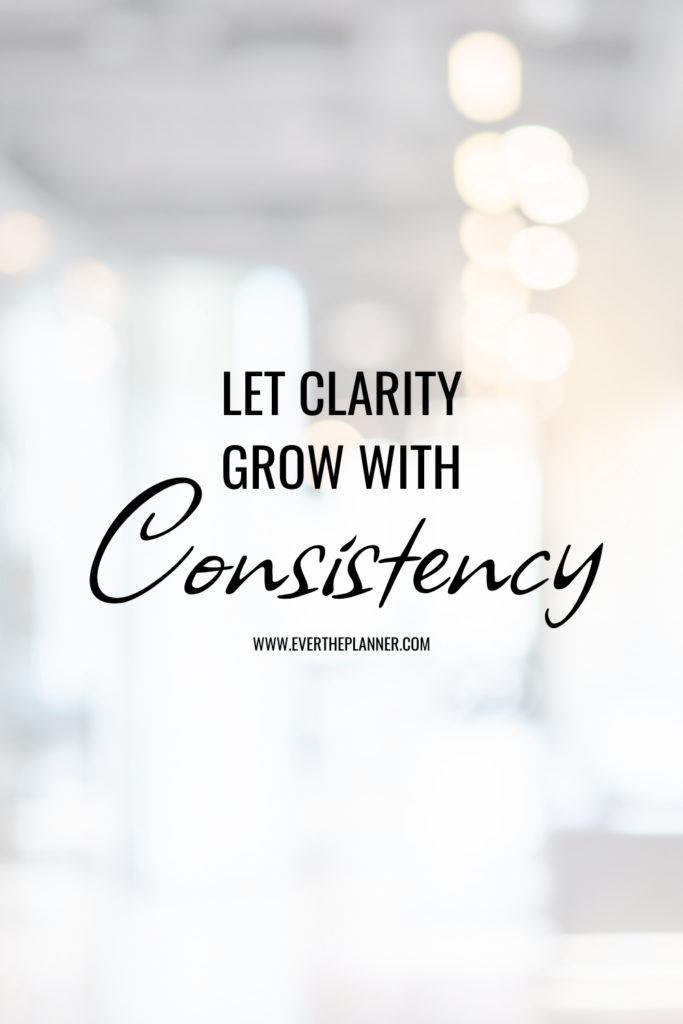
Let Your Audience Evolve as You Grow
One of the biggest myths in blogging?
That you have to pick the “perfect” audience and stick with it forever.
The truth is: your audience can evolve—and it probably will.
You’ll get clearer over time. Your experiences will grow. You’ll learn what resonates most.
And that’s all part of the process.
Your first audience snapshot isn’t a lifelong commitment—it’s a starting point.
And the more you show up and create content, the more your true audience will start to reveal itself.
Here’s what to remember:
- You’re not locked into your first idea
- You don’t need permission to adjust your direction
- The people who connect with your voice and values will stick with you
- Growth comes from doing, not just planning
So give yourself space to explore. Start with the clearest version of your audience you have right now—and trust that your next steps will get clearer as you go.
You Don’t Need to Get It Perfect
If you’ve made it this far, take a deep breath—you’re already doing the work.
Defining your audience when you’re just starting out isn’t about getting it perfect. It’s about picking a direction, choosing someone to serve, and starting to show up consistently.
You’ll learn more as you go. You’ll make shifts. And with every post, you’ll build more clarity and confidence—not just in who you’re writing for, but in yourself.
The most important thing?
Don’t wait.
Start with what you know, speak to one person, and let everything else grow from there.
Remember:
- You don’t need to get it perfect—just get it clear enough to start
- You can (and will) refine your audience over time
- Your blog doesn’t need to be big to be helpful
- Progress > perfection—always
Keep the Momentum Going:
Need help planning your content after you define your audience?
Check out my FREE Content Clarity Workbook—it’s designed to help you go from “What should I post?” to “Let’s publish this thing.”
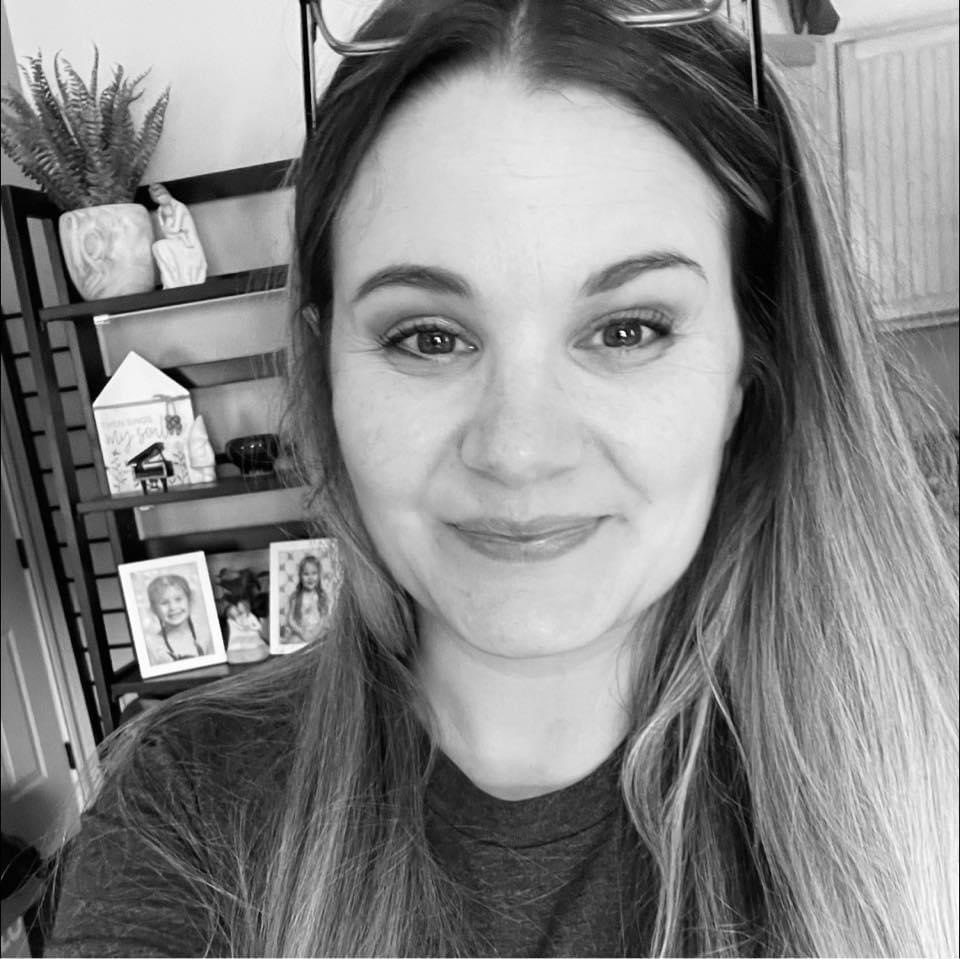
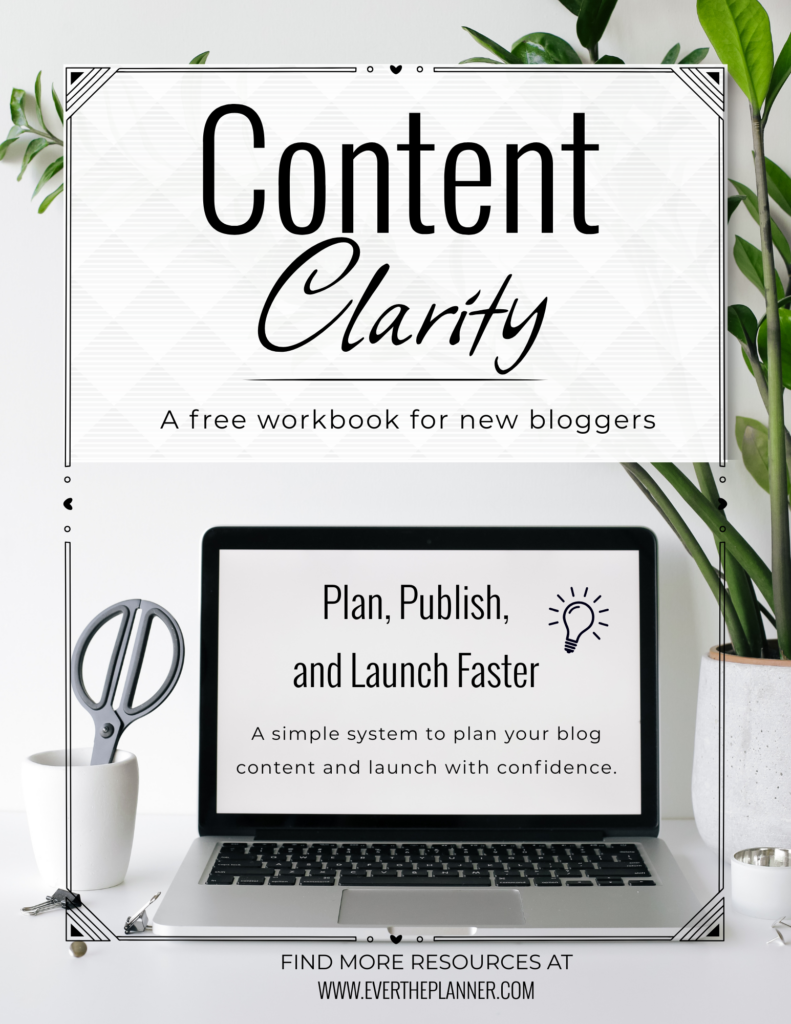
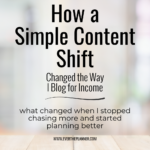
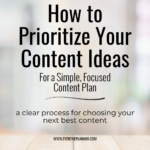
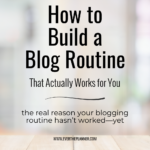
Be the first to comment